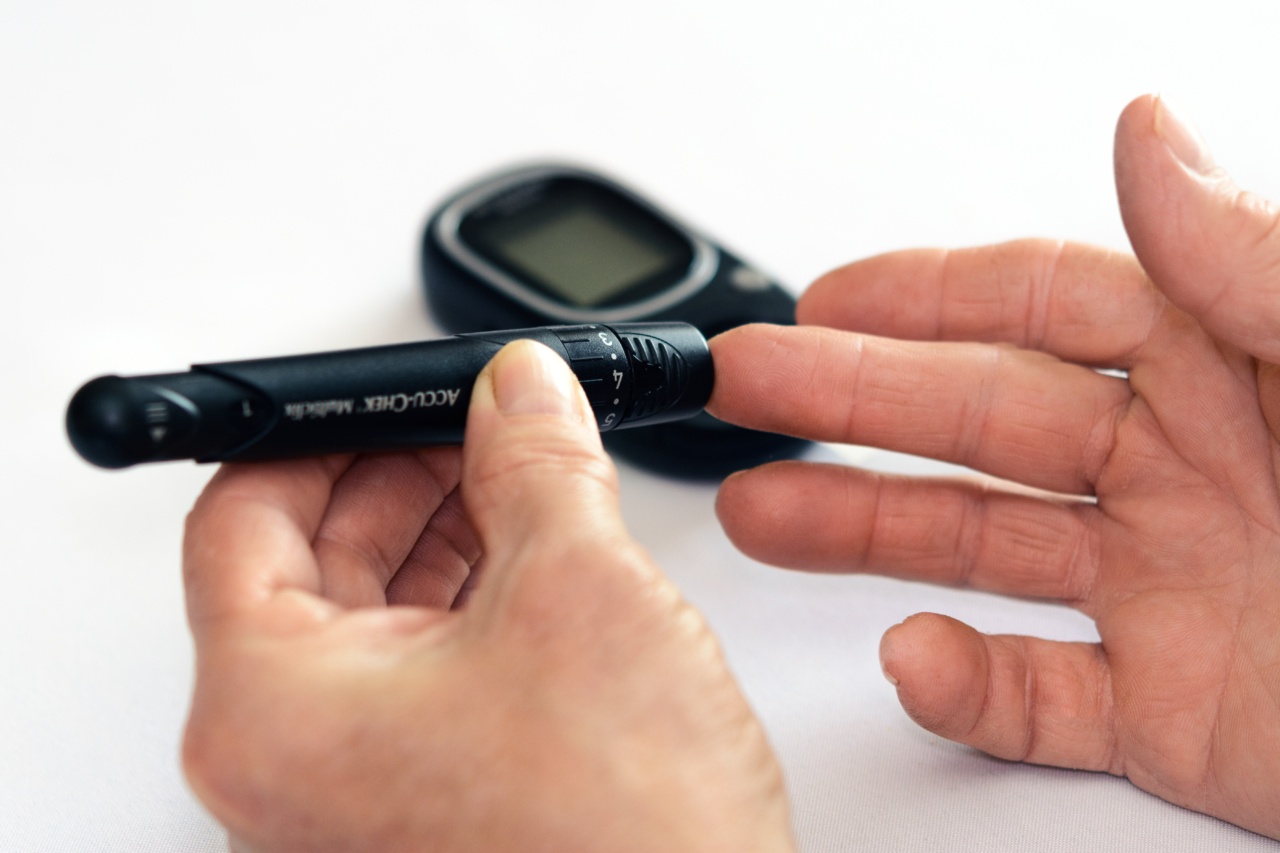Glycosylated hemoglobin, also known as HbA1c, is a form of hemoglobin that is used to measure the average blood glucose levels over a period of time.
It is formed when glucose in the blood attaches to hemoglobin, the protein in red blood cells that carries oxygen throughout the body. This process is known as glycosylation. Glycosylated hemoglobin is commonly used for monitoring and managing diabetes. However, its role in gestational diabetes, a type of diabetes that occurs during pregnancy, is less well-known.
What is Gestational Diabetes?
Gestational diabetes is a temporary form of diabetes that affects pregnant women, usually occurring in the second or third trimester. It is characterized by high blood sugar levels that can pose risks to both the mother and the baby.
The condition typically resolves after childbirth, but it increases the risk of developing type 2 diabetes later in life for both the mother and the child.
Monitoring Blood Sugar Levels in Gestational Diabetes
During pregnancy, it is crucial to monitor blood sugar levels in women with gestational diabetes to ensure they remain within a healthy range. This can be done through regular blood glucose testing.
However, glycosylated hemoglobin levels can also provide valuable information about long-term blood sugar control throughout the pregnancy.
The Role of Glycosylated Hemoglobin in Gestational Diabetes
Glycosylated hemoglobin levels reflect the average blood glucose concentration over the preceding 2-3 months.
Unlike regular blood glucose testing, which measures current glucose levels, glycosylated hemoglobin provides insight into the overall blood sugar control of a person. This test is typically used to diagnose and manage diabetes, including type 1 and type 2. However, its role in gestational diabetes is not as widely acknowledged.
Benefits of Glycosylated Hemoglobin Testing in Gestational Diabetes
Utilizing glycosylated hemoglobin testing alongside regular blood glucose monitoring provides several advantages for women with gestational diabetes:.
- Long-term assessment: Glycosylated hemoglobin offers a long-term perspective on blood sugar control, complementing the short-term monitoring provided by regular glucose tests. This can help identify patterns and trends in blood sugar levels.
- Objective measure: Blood glucose readings can fluctuate throughout the day, impacted by various factors such as meals and physical activity. Glycosylated hemoglobin, on the other hand, provides an objective measure that is not influenced by these daily variations.
- Treatment evaluation: Monitoring glycosylated hemoglobin levels allows healthcare providers to assess the effectiveness of treatment plans and make necessary adjustments to ensure optimal blood sugar control.
- Reduced testing frequency: Compared to regular blood glucose monitoring, which requires frequent finger pricks, glycosylated hemoglobin testing requires fewer blood samples. This can help reduce discomfort and enhance convenience for pregnant women.
Interpreting Glycosylated Hemoglobin Levels in Gestational Diabetes
The interpretation of glycosylated hemoglobin levels in gestational diabetes may differ slightly from the guidelines used for diagnosing and managing diabetes in general.
In the case of gestational diabetes, target HbA1c levels are usually lower than those recommended for non-pregnant individuals.
The American Diabetes Association (ADA) recommends the following HbA1c targets for pregnant women:.
- HbA1c level below 5.7%: Normal or low risk
- HbA1c level between 5.7% and 6.4%: Increased risk of gestational diabetes
- HbA1c level 6.5% or higher: Diagnostic of diabetes
These targets may vary depending on specific guidelines provided by healthcare providers, so it’s important to consult with a medical professional for personalized recommendations.
Glycosylated Hemoglobin Testing Frequency in Gestational Diabetes
The frequency of glycosylated hemoglobin testing during pregnancy may differ depending on individual circumstances and healthcare provider recommendations. In general, HbA1c testing is typically performed:.
- At the time of gestational diabetes diagnosis
- Approximately every 4 to 6 weeks during pregnancy
- After childbirth to assess the risk of developing type 2 diabetes
However, the frequency may be adjusted based on the woman’s blood sugar control, overall health, and any other gestational diabetes complications.
The Limitations of Glycosylated Hemoglobin Testing in Gestational Diabetes
While glycosylated hemoglobin testing provides valuable insights into blood sugar control during pregnancy, it does have some limitations:.
- Accuracy: Glycosylated hemoglobin levels may be influenced by factors other than blood sugar control, such as certain medical conditions and blood disorders.
- Incomplete picture: Glycosylated hemoglobin levels offer an average blood sugar reading but may not indicate specific high or low blood sugar episodes throughout the day.
- Unreliable in certain cases: The accuracy of glycosylated hemoglobin testing may be compromised in certain circumstances, such as in the presence of anemia or hemoglobinopathies.
Therefore, it is essential to combine glycosylated hemoglobin testing with regular blood glucose monitoring to obtain a comprehensive understanding of blood sugar control during gestational diabetes.
Conclusion
Glycosylated hemoglobin testing, often used for diagnosing and managing diabetes, plays a lesser-known but valuable role in gestational diabetes.
The long-term perspective it provides can complement regular blood glucose monitoring, offering unique insights into blood sugar control during pregnancy. However, it is essential to acknowledge the limitations of this test and incorporate it alongside other monitoring methods to achieve optimal gestational diabetes management.





























